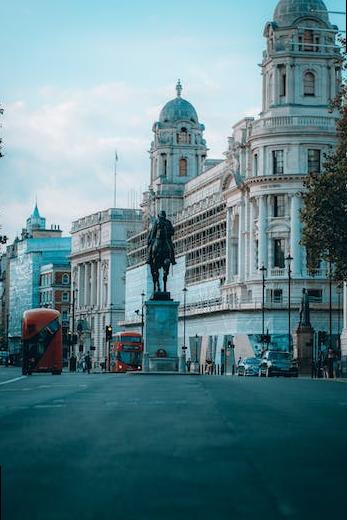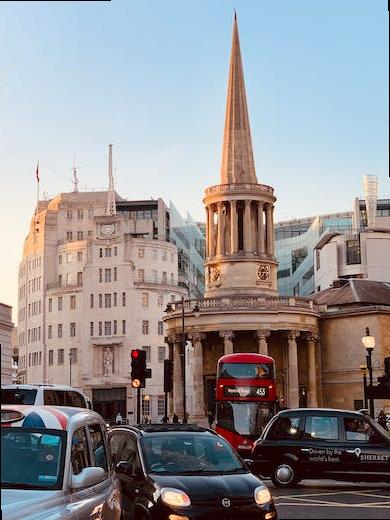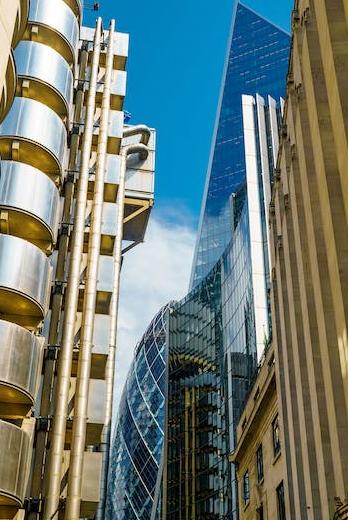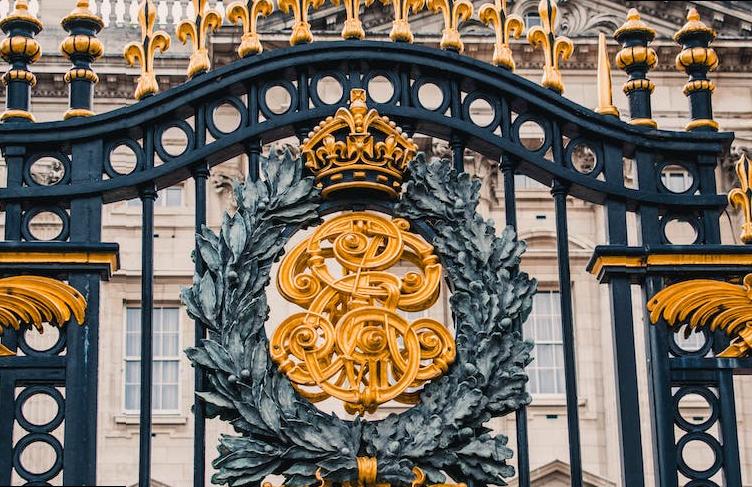The London Congestion Charge, introduced in 2003, is a fee imposed on most motor vehicles entering the city’s central zone during peak hours. The introduction of the charge was aimed at reducing traffic congestion, improving air quality, and encouraging more sustainable modes of transportation. However, the charge has also had significant economic benefits for the city, despite initial skepticism.
The cost of the London Congestion Charge is currently £15 per day, payable between 7am and 10pm, Monday to Friday. The fee is automatically charged to the vehicle’s registered owner or driver, and failure to pay can result in a penalty charge notice of up to £240.
One of the most significant economic benefits of the London Congestion Charge has been increased revenue for the city. The charge generated £282 million in revenue in 2019-20, which was invested in the city’s transport infrastructure, such as cycling and pedestrian infrastructure. The charge has also led to reduced traffic congestion, which has saved businesses time and money on deliveries.
Additionally, the charge has encouraged more sustainable modes of transportation, such as cycling and public transport. This has resulted in reduced air pollution, which has significant economic benefits, including reduced healthcare costs and increased productivity due to fewer sick days.
In conclusion, while the London Congestion Charge was primarily introduced for environmental reasons, it has also had significant economic benefits for the city.
London’S Economic Gains
The introduction of the congestion charging system in London has been a significant contributor to the city’s economic gains. The system, which was introduced in 2003, imposes a fee on drivers who wish to drive through certain parts of central London during peak hours.
Currently, the standard daily charge for the congestion charge in London is £15. However, there are a few exemptions and discounts available for certain individuals, such as residents of the congestion charge zone, disabled persons, and some healthcare workers.

The revenue collected from the congestion charge has been reinvested into improving transport infrastructure and public transport services, which has led to reduced traffic congestion and improved travel times for commuters. The system has also encouraged the use of alternative modes of transportation, such as cycling and public transport, further reducing traffic on the roads.
Overall, the congestion charging system has been a successful tool in managing traffic and improving the city’s economy. It has led to reduced air pollution, increased productivity, and boosted businesses in the affected areas.

Check out the best kitchen design ideas and discover how much to fit a kitchen in London to bring your dream kitchen to life.
Measured Through Congestion Charge
The current London Congestion Charge is £15 per day for each vehicle that enters the charging zone between 7:00 am and 10:00 pm, seven days a week. This charge applies to all drivers who enter the Congestion Charging Zone (CCZ), which covers a defined area in central London. The CCZ is clearly marked using signs and road markings; drivers who fail to pay the charge will receive a penalty charge notice (PCN).
The aim of the Congestion Charge is to reduce traffic congestion in central London and encourage people to use public transport or other alternatives such as cycling or walking. The charge was introduced in 2003, initially applying only to weekdays. However, subsequent changes to the scheme have extended its application to every day of the week.
The Congestion Charge is an important measure for reducing air pollution and improving the quality of life for Londoners. The funds generated from the charge are reinvested into improving the city’s transportation infrastructure, with a focus on making public transport more accessible, reliable and comfortable. The charge has also contributed to a significant reduction in traffic congestion in the capital, with traffic levels in 2020 estimated to be 40% lower than in 2002.
City’S Financial Status Enhanced
The introduction of the London Congestion Charge has been a major factor in the enhancement of the financial status of the city. The charge first came into effect in 2003 and has since proved to be successful in reducing traffic congestion in the city.
The current cost of the London Congestion Charge is £15 per day per vehicle. The charge is in operation from Monday to Friday, between the hours of 7am and 10pm. Vehicles that are exempt from the charge include those that meet certain emissions standards, electric vehicles, and vehicles used by disabled people.
Revenue from the London Congestion Charge is used to fund improvements in public transport infrastructure, including the expansion of the London Underground network and improvements to bus services. The charge has also encouraged the adoption of more sustainable modes of transport, such as cycling and walking, which has contributed to improvements in public health.
The success of the London Congestion Charge has led to other cities around the world adopting similar schemes. These schemes have the potential to enhance the financial status of cities by reducing traffic congestion, improving public transport infrastructure, and encouraging the adoption of sustainable modes of transport.
Reduction In Traffic Congestion
The London Congestion Charge is a daily fee charged on drivers who drive in the designated area of Central London during peak hours. The purpose of the charge is to reduce traffic congestions and improve air quality in the city. The congestion charge was introduced in 2003 and has been modified multiple times since.
Currently, the daily fee for the congestion charge in Central London is £15. This fee is applicable from Monday to Friday, between 7 am to 10 pm. The charge applies to all motor vehicles, including cars, vans, and motorcycles. However, certain types of vehicles, such as electric cars and vehicles for disabled people, are exempted from the congestion charge.
The revenue generated from the congestion charge is used by Transport for London (TfL) to improve public transport services and reduce traffic congestion in the city. The London Congestion Charge has been successful in reducing traffic congestion in Central London, although critics argue that it has not significantly impacted air quality.
Overall, the London Congestion Charge remains a popular policy in London, with many residents supporting the initiative to reduce traffic congestion and improve air quality. The congestion charge is a daily reminder to drivers that they are not just responsible for themselves but also for the wider community.
Improved Air Quality Standards Achieved
Improved air quality standards have been achieved in London through the implementation of the congestion charge. The London Congestion Charge was introduced in 2003 to reduce traffic and pollution in the city center. The charge initially cost £5 per day, but increased to £8 in 2005 and then to £10 in 2011.
The charge applies to cars, motorcycles, and vans that drive within the zone. The zone covers an area of approximately 21 square kilometers and operates between 7 am and 10 pm on weekdays. Drivers who fail to pay the charge face a fine of £160.
Since the introduction of the congestion charge, studies have shown that air quality in central London has improved significantly. According to a report from King’s College London, the level of nitrogen oxides (NOx) has decreased by approximately 30% since 2003.
In addition to reducing air pollution, the congestion charge has also helped to reduce traffic congestion in the city center. According to Transport for London, traffic levels in the congestion charging zone have decreased by around 30% since the charge was introduced.
The success of the congestion charge has led to other cities around the world considering similar schemes to improve air quality and reduce traffic congestion.
Transportation Infrastructure Upgraded
The transportation infrastructure in London has been upgraded in recent years to accommodate the increasing number of vehicles and reduce traffic congestion. One of the measures implemented is the London Congestion Charge, which aims to reduce traffic flow in the city center during peak hours. The charge was first introduced in 2003, and since then, it has gone through several revisions.
As of 2021, the London Congestion Charge costs £15 per day for most vehicles, with certain exemptions and discounts available for residents and other eligible drivers. The charge applies to vehicles entering the Congestion Charging Zone (CCZ) between 7 am and 10 pm, Monday to Sunday, every day of the year, except Christmas Day. The CCZ covers most of the city center, and drivers can pay the charge online, by phone or by text message.
The money raised from the Congestion Charge is reinvested in transportation infrastructure projects, such as improving public transport and cycling facilities. The introduction of the Congestion Charge has helped to reduce traffic congestion and air pollution levels in central London. In addition to the Congestion Charge, other measures have been implemented, such as low emission zones and the Ultra Low Emission Zone (ULEZ), to further reduce vehicle emissions and improve air quality in the city.
Increased Revenue For Public Transport
The London congestion charge is currently set at £15 per day for vehicles that enter the congestion zone between 7 am and 10 pm seven days a week. The aim of the congestion charge is to reduce traffic flows and improve air quality in the city. Since its introduction in 2003, the scheme has generated significant revenue for public transport.

One way that the congestion charge has increased revenue for public transport is by encouraging people to use public transport instead of driving. This has resulted in an increase in the number of people using buses and trains, which has in turn led to an increase in revenue for these services.
Moreover, the revenue generated by the congestion charge has been invested in improving public transport infrastructure in London. This includes funding for new buses, trains, and stations, as well as improvements to existing services such as increased frequency and capacity.
Overall, the London congestion charge has been an effective way of reducing traffic congestion and improving air quality in the city. It has also generated significant revenue for public transport, which has helped to improve the quality and accessibility of these services for Londoners.
Enhanced Public Spaces And Cycling
Enhanced public spaces and cycling have become a priority in cities around the world. In London, the city has invested in improving the quality of public spaces, including creating new cycling infrastructure. The city has also implemented a congestion charge, which is a fee that drivers must pay to enter the city center. As of 2021, the London congestion charge is £15 per day.
The aim of the congestion charge is to reduce traffic congestion and improve air quality. The fee applies to most vehicles entering the designated zone during business hours. Electric vehicles and some other low-emission vehicles are exempt from the fee.
In addition to the congestion charge, London has invested heavily in cycling infrastructure. The city has created over 100 miles of cycling lanes in recent years, making it easier and safer for people to cycle around the city. London’s bike share program, Santander Cycles, has also been expanded to support more people cycling.

The technological advancements used in the London Underground have contributed to the smooth operation and maintenance of its 11 lines. These advancements include real-time passenger information systems, smart ticketing, and automated train control. By investing in both public spaces and cycling infrastructure, London is taking steps to create a cleaner, healthier, and more accessible city for all.
Sponsored Green Initiatives Successful
Sponsored green initiatives have become successful in London. As a result, how much is the London congestion charge has changed. The current charge stands at £15 per day from 7:00 am to 10:00 pm, seven days a week, excluding Christmas Day. This is to encourage drivers to adopt green modes of transportation and reduce overcrowding on the roads. The sponsored green initiatives have led to a decrease in traffic, air and noise pollution in London. This has resulted in a positive impact on the environment and public health.
The success of these green initiatives has also had a positive impact on the income of taxi drivers in London. The anchor text how much do taxi drivers in London make refers to the average income of taxi drivers in London. On average, taxi drivers in London make around £30,000 per year. However, the sponsored green initiatives have encouraged more people to use public transportation, leading to a decrease in demand for taxi services. This has affected the income of taxi drivers negatively.
In conclusion, the sponsored green initiatives have been successful in London, resulting in a lower London congestion charge and a positive impact on the environment and public health. However, the decrease in demand for taxi services has negatively affected the income of taxi drivers in London.
Applicable To Other Global Cities.
The London Congestion Charge is a fee charged to drivers who enter a designated zone in central London during specific hours. It was introduced in 2003 to reduce traffic congestion and improve air quality in the area. At the time of writing, the fee is £15 per day, and it applies from Monday to Friday between 7 a.m. and 10 p.m. The charge is not in effect on weekends, public holidays, or between Christmas and New Year’s Day.
London’s approach to reducing congestion through a congestion charge has been widely studied and emulated in other cities around the world. Cities such as Singapore, Milan, and Stockholm have implemented similar systems, and many more are considering doing so. The London congestion charge has shown that a well-designed and implemented policy can significantly reduce traffic and air pollution in city centers.
In conclusion, London’s congestion charge has been effective in reducing traffic and air pollution in the city center, and its success has made it a model for other cities looking to implement similar policies. If you are interested in exploring alternative housing options, check out this guide on how to move out of London social housing.
Final note
In conclusion, the London Congestion Charge is a daily fee imposed on motorists operating within the designated area of Central London. The charge is aimed at reducing traffic congestion and improving the air quality in the city by encouraging people to use public transportation or bicycles. The fee applies to all vehicles, including cars, motorcycles, and trucks, with few exceptions. The current charge is £15 per day, between 7:00 AM to 10:00 PM, seven days a week, and must be paid in advance or on the same day of travel. Failure to pay the charge leads to a penalty of up to £160, which doubles if not paid within 14 days.
Although London’s Congestion Charge has been criticized for its high cost, it has significantly helped to reduce air pollution and traffic congestion in the city’s central area. Moreover, motorists can save money by paying for the charge less frequently using Auto Pay, which deducts the fee automatically from the registered credit or debit card. Other exemptions include electric vehicles, vehicle adapted for people with disabilities, and some residents of the congestion charging area.

Therefore, it is essential to understand the requirements and exemptions related to the Congestion Charge before driving into the affected area. It not only helps to avoid penalties but also contributes to reducing traffic congestion and improving air quality in the city.
